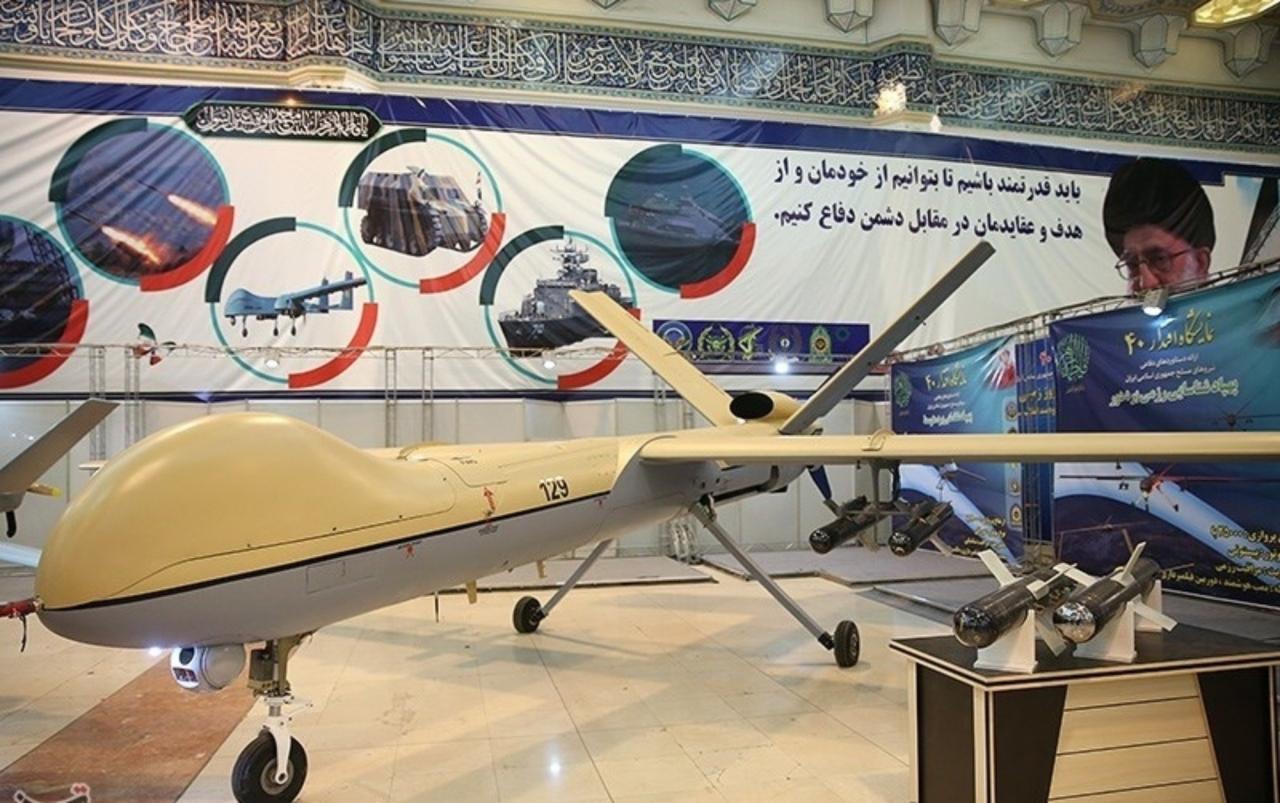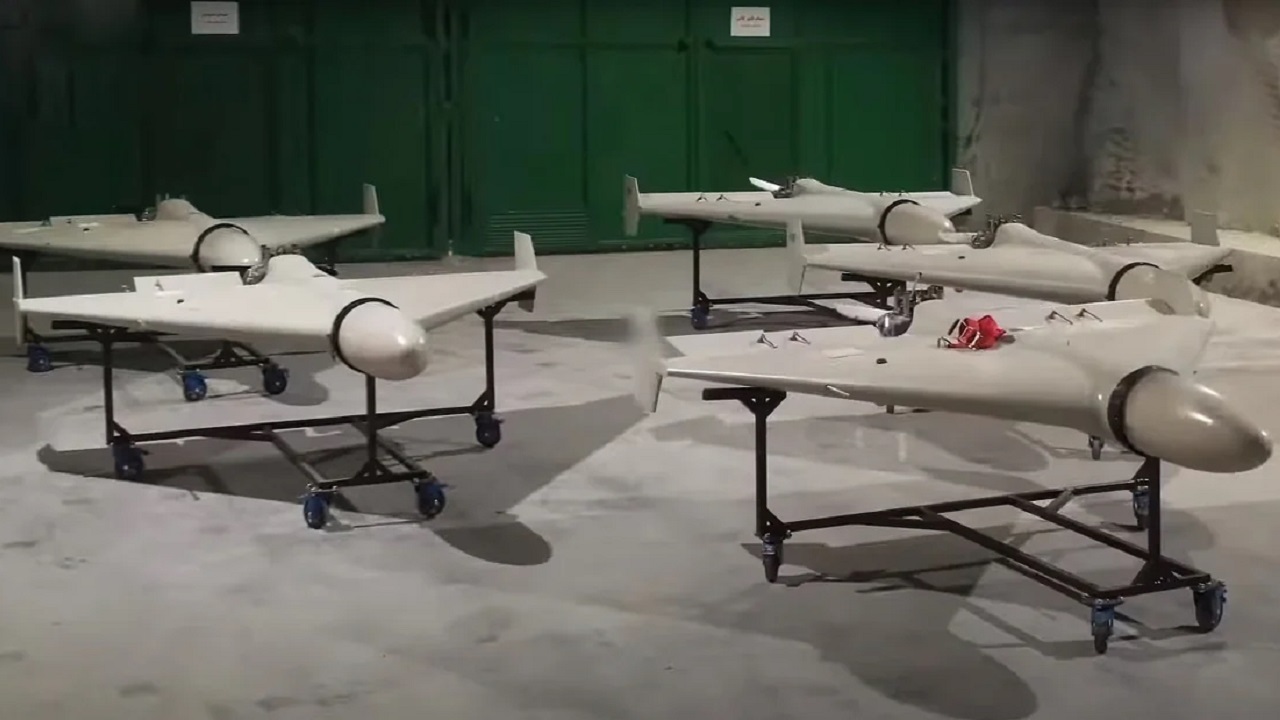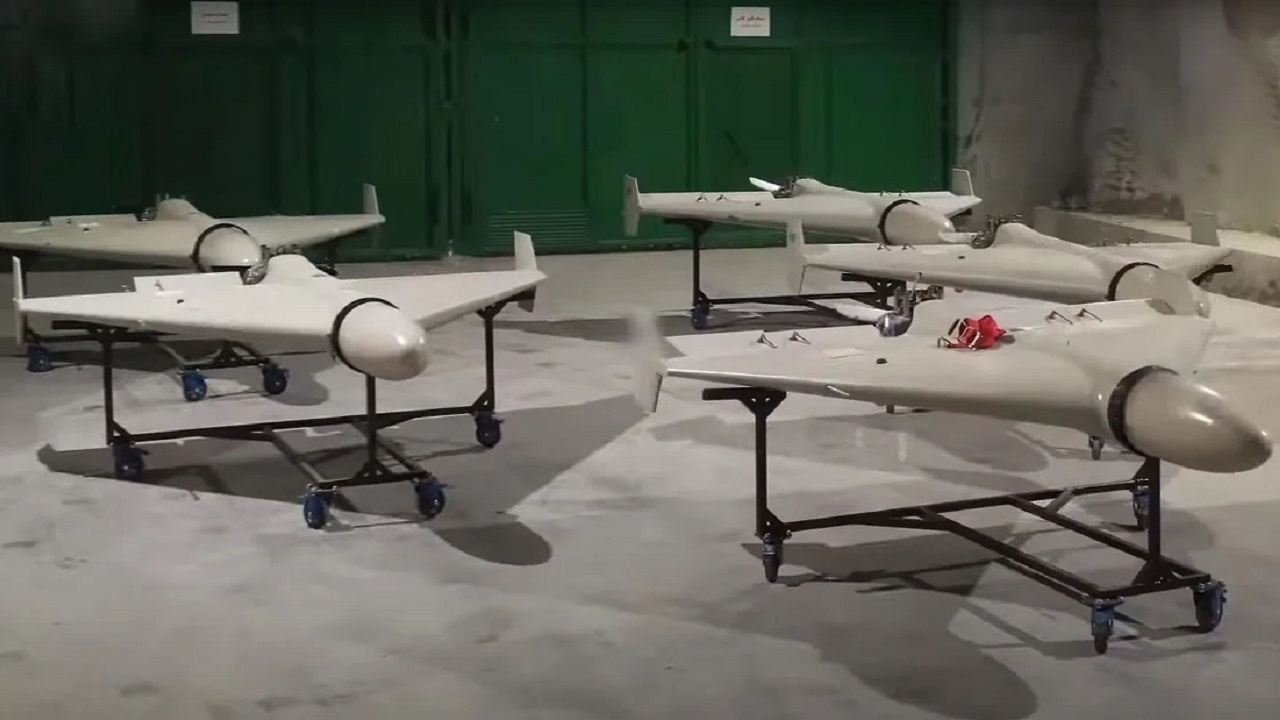Shahed drones, inexpensive and readily available, have become a significant factor in modern warfare and geopolitical tensions. Their relatively simple design belies a complex impact on conflict zones and international relations, raising critical questions about military technology, ethics, and the future of asymmetric warfare. This exploration delves into the technical specifications, operational capabilities, manufacturing processes, impact, countermeasures, and international implications of this increasingly prevalent unmanned aerial vehicle.
From their design and production to their deployment in various conflicts, the Shahed drone presents a multifaceted case study in the evolution of military technology and its profound effects on the global landscape. Understanding their capabilities and limitations is crucial for comprehending current geopolitical dynamics and anticipating future challenges.
Shahed Drone: A Comprehensive Overview
The Shahed drone, also known as the Shahed-136, has emerged as a significant player in modern warfare, garnering attention for its relatively low cost, ease of production, and devastating impact. This overview delves into the technical specifications, operational capabilities, manufacturing processes, impact, countermeasures, international implications, and visual identification of this unmanned aerial vehicle (UAV).
Shahed Drone Technical Specifications

The Shahed drone is a loitering munition, designed for one-way attacks. Its design emphasizes simplicity and cost-effectiveness, sacrificing some sophistication for affordability and ease of mass production. It employs a relatively straightforward propulsion system and incorporates a pre-programmed guidance system. The payload capacity is limited, primarily designed to carry a single warhead.
The Shahed drone, a relatively inexpensive and readily available unmanned aerial vehicle, has gained notoriety for its use in various conflicts. Incidents involving similar technology, such as the recent nj drone shot down , highlight the growing concerns surrounding civilian airspace security and the challenges posed by readily available drone technology. The proliferation of Shahed drones underscores the need for robust counter-drone measures globally.
The propulsion system typically consists of a small, relatively low-power internal combustion engine, granting it a limited flight range and endurance. The precise range varies depending on factors like wind conditions and payload, but generally falls within the range of several hundred kilometers. The payload is a high-explosive warhead, designed to inflict significant damage upon impact. While details on the exact explosive yield are scarce, estimates suggest a payload in the range of 50kg.
The Shahed drone’s relatively low cost and ease of production have made it a significant factor in recent conflicts. Understanding potential deployment areas is crucial, and monitoring locations like the coastline becomes important; you can check out the real-time view with the port dover live camera for a sense of the region’s accessibility. This type of surveillance can help assess the potential threat posed by Shahed drones in various geographical contexts.
| Specification | Shahed-136 | Bayraktar TB2 | Switchblade 600 |
|---|---|---|---|
| Wingspan | ~2.5m (estimated) | ~12m | ~2m (estimated) |
| Length | ~3.5m (estimated) | ~6.5m | ~1m (estimated) |
| Max. Speed | ~185 km/h (estimated) | ~220 km/h | ~160 km/h (estimated) |
| Range | ~1000-2500 km (variable) | ~300 km | ~40 km |
| Payload | ~50kg (estimated) | ~55kg | ~10kg |
Note: Specifications for the Shahed-136 are based on publicly available information and may vary. The comparison table utilizes data from publicly available sources and may not be entirely precise due to the lack of complete official specifications.
Shahed Drone Operational Capabilities
The Shahed drone’s flight characteristics are relatively straightforward. Its maneuverability is limited, relying primarily on pre-programmed flight paths and GPS guidance. Targeting is achieved through a combination of pre-programmed coordinates and potentially satellite imagery or other intelligence data. The drone is typically deployed from a launch site, often a relatively simple mobile launcher.
Deployment usually involves launching the drone from a designated location, allowing it to fly autonomously to its target. Successful missions have been documented in various conflicts, while unsuccessful missions often involve countermeasures or mechanical failures. For instance, successful missions have demonstrated its effectiveness in striking targets in Ukraine, while unsuccessful missions often result from interception by air defenses.
Shahed Drone Manufacturing and Acquisition
The manufacturing process of the Shahed drone is characterized by its simplicity and reliance on readily available components. This contributes to its low production cost and ease of mass production. The primary manufacturing facilities are believed to be located within Iran, with components potentially sourced from various international suppliers. The exact details of the supply chain remain partially obscured, but it is believed to leverage both domestic and international sources.
- Component Sourcing: Engines, electronics, and other key components are sourced from a combination of domestic Iranian manufacturers and potentially international suppliers, with some components potentially acquired through less transparent channels.
- Assembly: Final assembly of the drone is believed to be conducted at designated facilities in Iran.
- Quality Control: Quality control procedures are likely less stringent than those for more sophisticated UAVs, reflecting the prioritization of quantity over precision.
- Distribution: Distribution to end-users is likely handled through various channels, including direct sales and potentially indirect methods.
Shahed Drone Impact and Countermeasures
The Shahed drone’s impact on modern warfare is significant due to its cost-effectiveness and ability to inflict damage. Its deployment has shifted tactical considerations, requiring adjustments in defense strategies. Countermeasures against the Shahed drone range from electronic warfare systems to kinetic interception methods. The effectiveness of these countermeasures varies depending on factors such as detection range and the capabilities of the defensive systems employed.
Examples of successful countermeasures include the use of anti-aircraft artillery, electronic jamming, and even small arms fire in some instances. The success rate of these countermeasures depends on factors such as the proximity of the defensive systems to the drone, the responsiveness of the operators, and the overall capabilities of the countermeasures employed. A hypothetical scenario could involve the successful interception of a Shahed drone using a combination of radar detection and a close-range anti-aircraft missile system.
Shahed Drone in International Relations

The use of Shahed drones has raised significant international legal and ethical concerns. Its deployment in various geopolitical conflicts has led to diplomatic tensions and international condemnation. The proliferation of this technology raises questions about the responsible use of military technology and the potential for escalation of conflicts.
Different state and non-state actors have employed Shahed drones, leading to varied outcomes and strategic implications. The international legal and ethical ramifications are complex, encompassing considerations of international humanitarian law, arms control treaties, and state sovereignty. A timeline of significant events related to Shahed drone deployments would include the initial deployments, their use in specific conflicts, and the subsequent international responses.
Shahed Drone Imagery and Visual Analysis

A Shahed drone in flight presents a distinctive profile. It’s relatively small and has a characteristic delta-wing configuration. Its size is comparable to a small motorcycle, with a slender fuselage and relatively short wings. The drone’s color is typically a muted gray or brown, offering camouflage in various environments.
Shahed drone launch sites are often characterized by minimal infrastructure, potentially consisting of simple launch ramps or even just open fields. The surrounding environment may vary, but there’s typically a lack of complex support structures. Identifying a Shahed drone from other similar UAVs involves careful examination of its size, shape, and wing configuration, along with the consideration of the operational context and the geographical location of the observation.
The Shahed drone’s proliferation underscores the evolving nature of modern warfare, highlighting the accessibility of sophisticated military technology and its potentially destabilizing effects. While countermeasures are constantly being developed, the drone’s low cost and relative ease of production pose ongoing challenges. Further research into the ethical and legal implications of its use, along with advancements in counter-drone technology, will be critical in mitigating the risks associated with this potent weapon system.
Common Queries: Shahed Drone
What is the estimated flight range of a Shahed drone?
The flight range varies depending on the specific model and payload, but generally falls within a range of several hundred kilometers.
How are Shahed drones typically guided?
Guidance systems vary, but many utilize GPS and inertial navigation systems, with some potentially incorporating other technologies.
What types of payloads can Shahed drones carry?
Payloads typically include high explosives, but the exact type and amount vary across different models.
Are there international sanctions related to Shahed drone production or export?
Yes, several countries have imposed sanctions on entities involved in the production, sale, and distribution of Shahed drones.
